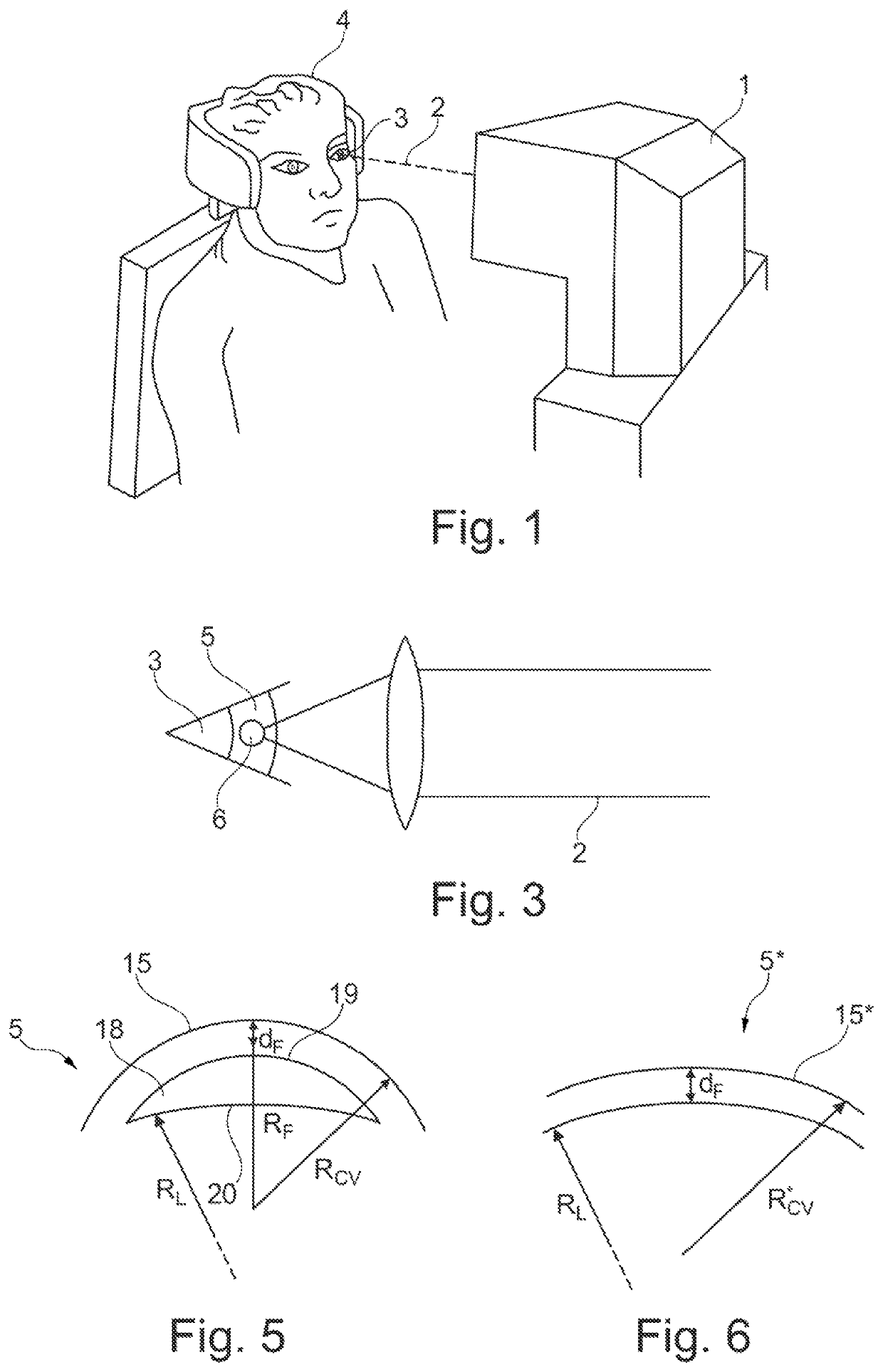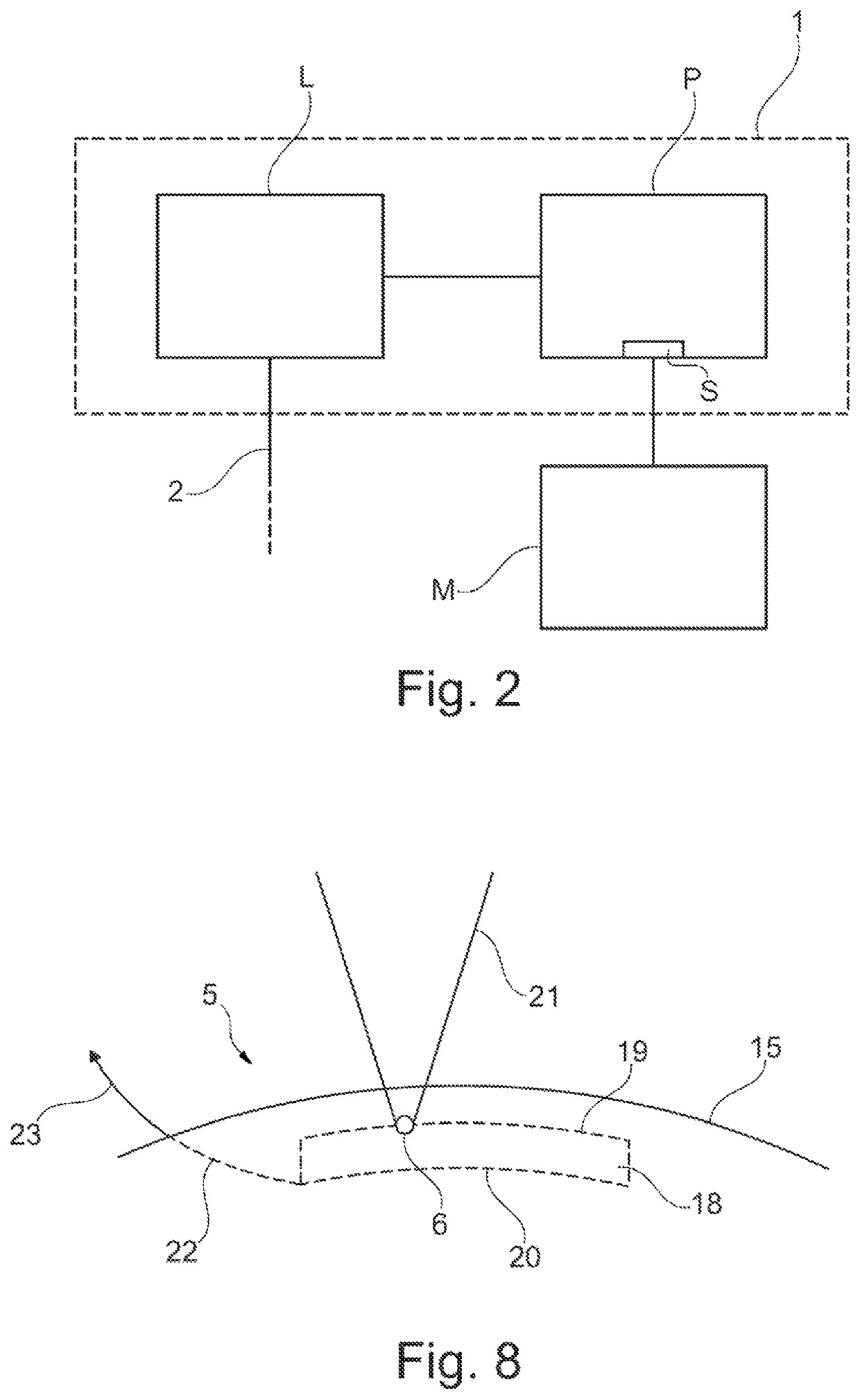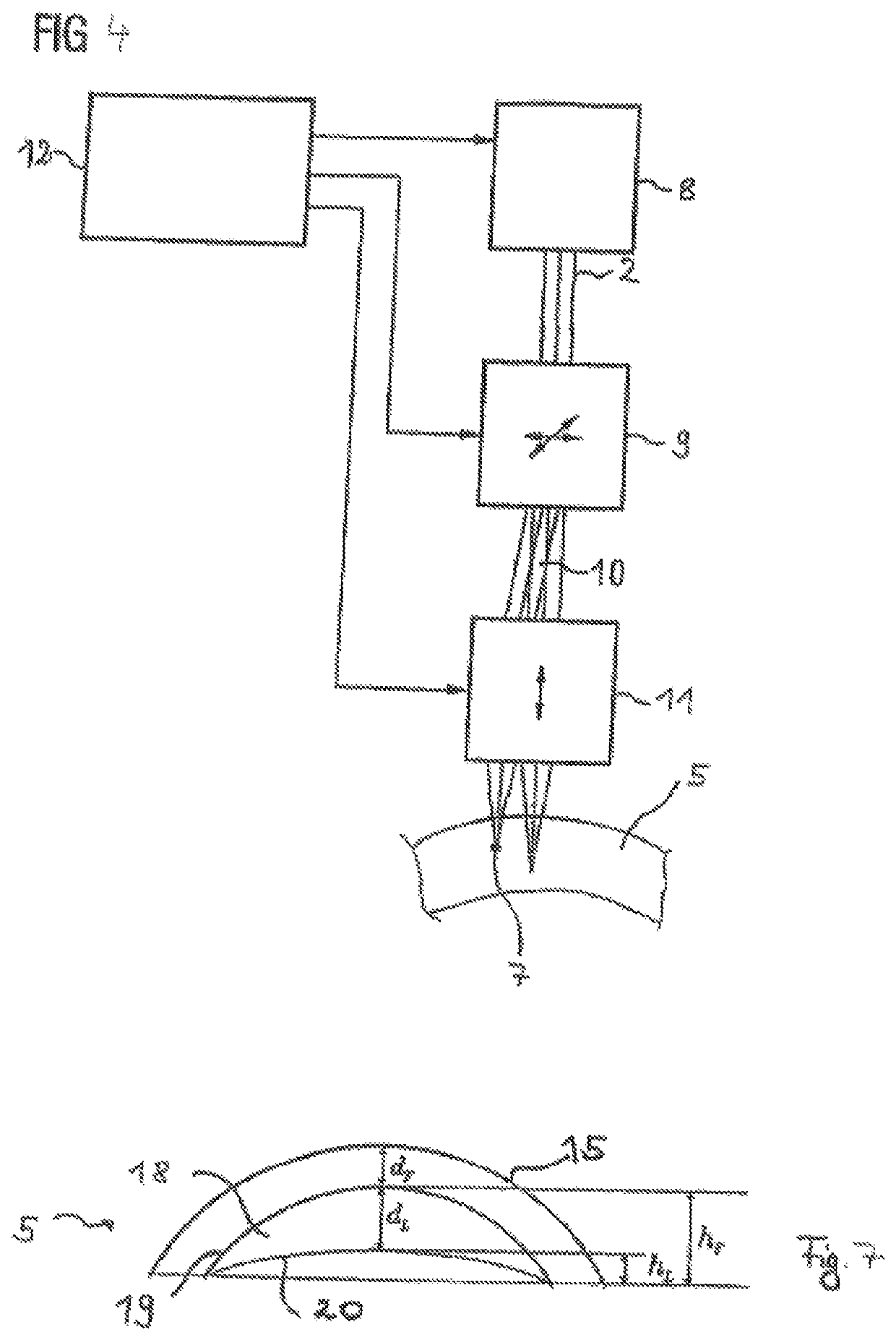Device for surgically correcting ametropia of an eye and method for creating control data therefor
a technology of ametropia and eye, applied in the field of eye ametropia surgical correction and control data creation, can solve the problems of limited correction options, inapplicability to refractive surgery on the eye, and inability to use the empirical values developed for polishing the eye by laser radiation application, so as to achieve secure and simple volume enclosure
- Summary
- Abstract
- Description
- Claims
- Application Information
AI Technical Summary
Benefits of technology
Problems solved by technology
Method used
Image
Examples
Embodiment Construction
[0057]FIG. 1 depicts a treatment appliance 1 for an ophthalmic surgical method that is similar to the one described in EP 1159986 A1 and U.S. Pat. No. 5,549,632. By application of treatment laser radiation 2, the treatment appliance 1 brings about a refractive error correction on an eye 3 of a patient 4. The refractive error may comprise hyperopia, myopia, presbyopia, astigmatism, mixed astigmatism (astigmatism, in which hyperopia is present in one direction and myopia is present in a direction at right angles thereto), aspherical aberrations and higher-order aberrations. In the described embodiment, the treatment laser radiation 2 is applied as a pulsed laser beam that is focused into the eye 3. Here, the pulse duration lies in the femtosecond range, for example, and the laser radiation 2 acts by way of nonlinear optical effects in the cornea. By way of example, the laser beam comprises laser pulses that are 50 to 800 fs short (for example, 100-400 fs) with a pulse repetition frequ...
PUM
 Login to View More
Login to View More Abstract
Description
Claims
Application Information
 Login to View More
Login to View More - R&D
- Intellectual Property
- Life Sciences
- Materials
- Tech Scout
- Unparalleled Data Quality
- Higher Quality Content
- 60% Fewer Hallucinations
Browse by: Latest US Patents, China's latest patents, Technical Efficacy Thesaurus, Application Domain, Technology Topic, Popular Technical Reports.
© 2025 PatSnap. All rights reserved.Legal|Privacy policy|Modern Slavery Act Transparency Statement|Sitemap|About US| Contact US: help@patsnap.com



